by Ian Skellern
“It’s not a pocket watch,” Felix Baumgartner, Urwerk‘s co-founder and chief watchmaker, emphasized to me when he first explained the UR-1001 back in 2011 when it launched. “It is a ‘Zeit Device’,” he said. “Zeit Device” is a fanciful German construct for “time device.”
Six thousand years ago in the Sumerian city of Ur, shadows cast by obelisks revealed the passing of time thanks to the the course of the sun across the sky.
Two thousand years ago, astronomers in ancient Greece used the Antikythera mechanism to calculate the positions of the sun, moon and planets in the heavens.
In the eighteenth century, John Harrison’s H4 marine chronometer enabled safe and accurate navigation by sea.
In the twenty-first century, amidst thousands of time-telling devices now found everywhere in the world, Urwerk offers its own type of epoch-defining time-measuring instrument: the UR-1001 “Zeit Device.”
Faster, faster faster: t i m e t o s l o w d o w n
If there is one thing that defines the twenty-first century, it is its incredible pace. Time fleets and flies; we never have enough of it. Our timepieces reflect this by measuring ever-shorter intervals. The first clocks only displayed hours, then the minutes were added, and now seconds are ubiquitous. There are even mechanical chronographs now able to measure intervals as small as 1/1ooth of a second!
There are a few clocks and watches that take a longer view, notably the Long Now clock and Andreas Strehler’s Sauterelle à Lune Perpétuelle. But rarely do timepieces do justice to a universe measured in billions of years – as a true “Zeit Device” should.
The UR-1001, however, is a true Zeit Device, measuring and quantifying the era in its entirety from a solitary second to an astronomical millennia. The UR-1001 marks the passage of time in seconds, minutes, hours, day/night, date, month, years, 100 years, and even a monumental 1,000 years!
This black version is the UR-1001 AlTin (Aluminium Titanium Nitride), whose coating comprises a tough industrial surface treatment normally used on machine cutters and drill bits to reduce wear.
The Zeit Device wasn’t just developed by Urwerk, the brand also produced the majority of its components. Dials, springs, satellites, carrousels, and a retrograde spiral spring were all manufactured in-house, as were most of the components needed to assemble the Zeit Device’s complications and indications.
This video was made in the spirit of a bit of fun by Urwerk co-founder and chief designer Martin Frei and a couple of his friends: : Jean Pierre DiLenardo, designer of the jewelry brand CULT925, and photographer Nathan Beck.
A plethora of complications and indications
The hour satellite complication is a “flying” design in that there is no top bridge supporting the carrousel. This allows maximum appreciation of the satellite hour and retrograde minute mechanisms.
The retrograde minute hand is fixed to a sprung ring around the circumference of the satellite complication that is pushed along a guide rail by the hour satellite. A swan-neck spring engages two coaxial star cams. When the minute hand gets to 60 minutes, the star cams trip over to release the minute hand and it flies back to zero to meet the next hour satellite.
The day/night indicator is a rotating disc marked with black Super-LumiNova for the night, white-brushed ruthenium for day, and a striped mix for dusk/dawn.
A power reserve indicator monitors the amount of energy left in the mainspring up to 39 hours and features a red warning zone to remind the owner when the Zeit Device needs refueling.
The revolving satellite calendar is an original annual calendar complication completely developed in-house by Urwerk. Visually, it is in the same family as the hour satellite complication, with months and date replacing hours and retrograde minutes. However, whereas the hours rotate across the minutes with unchanging 60-minute regularity, the months automatically adjust according to whether they have 30 or 31 days.
“At the end of 30-day months — April, June, September and November — the date advances automatically to the first of the following month. At the end of the short months, a finger on a Maltese cross intervenes to make the date wheel advance two days to the next month,” Baumgartner explains.
On the back
The “oil change” indicator is the shortest time interval measured on the back of the Zeit Device. It alerts the user as to when a service is due after three years. As it does so, the dial changes from white (years one to three) to red (years three to five). This display is reset to zero each time the timepiece is serviced.
The 100-year indicator advances in five-year increments and acts like the odometer of a car. Where an automobile’s odometer keeps track of the total distance a vehicle has driven, the 100-year (and 1000-year) indicator of the UR-1001 registers the total running time of the movement.
The 1000-year indicator advances once every 100 years on its imperceptibly slow, but deliberate, journey toward a new millennium.
The UR-1001 AlTin is an impressive timepiece, and it’s no surprise that the eight pieces sold out quite quickly. We can only cross our fingers that Urwerk might release another version in the not-too-distant future.
Quick Facts UR-1001 AlTiN Zeit Device
Case: AlTiN-treated steel with titanium elements, 106 mm x 62 mm x 23 mm, bespoke chain with carabiner clasp
Functions: dial side: revolving satellite hour complication, retrograde minutes, running seconds; revolving satellite calendar with months and date, day/night indicator, power-reserve indicator; back side: “oil change” indicator (5 years), 100-year indicator, 1,000-year indicator
Limitation: 8 pieces (sold out)
Price: 340,000 Swiss francs (excluding taxes) retail in 2011
Trackbacks & Pingbacks
-
[…] more on the Urwerk UR-1001 Zeit Device, please visit The Urwerk UR-1001 Zeit Device Goes “Easy Rider” […]
-
[…] A Timepiece On The Wrist Too Big To Be Considered A Wristwatch?”: Urwerk UR-1001 Titan (see The Urwerk UR-1001 Zeit Device Goes ‘Easy Rider’ for more […]
Leave a Reply
Want to join the discussion?Feel free to contribute!

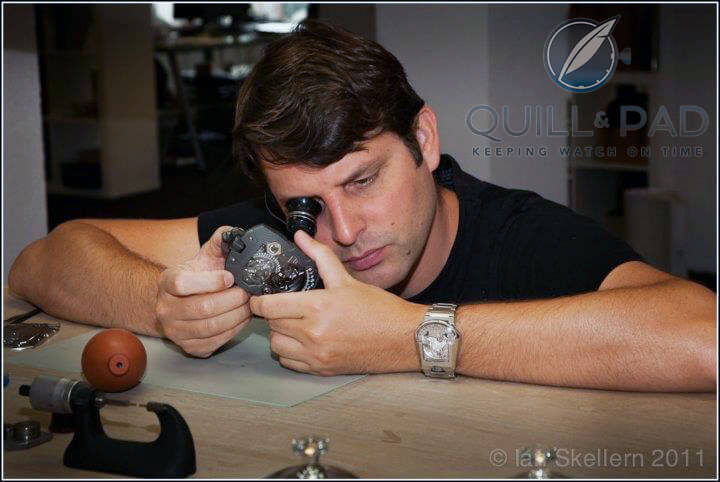
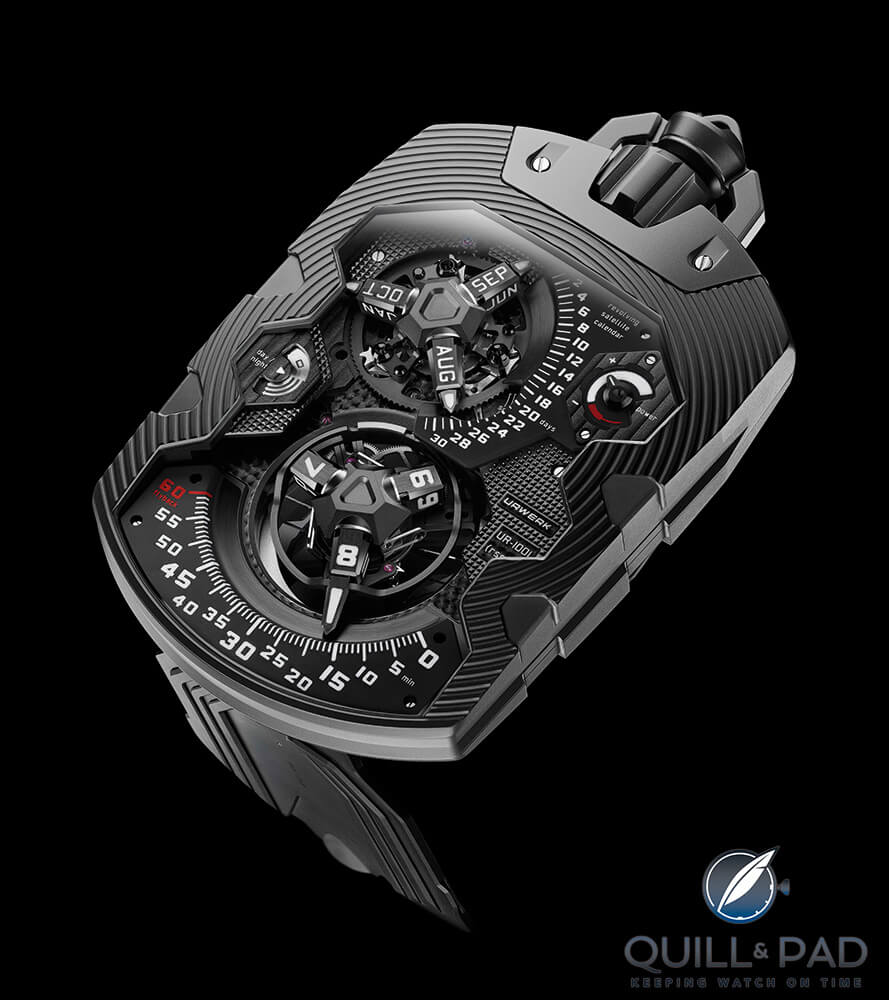


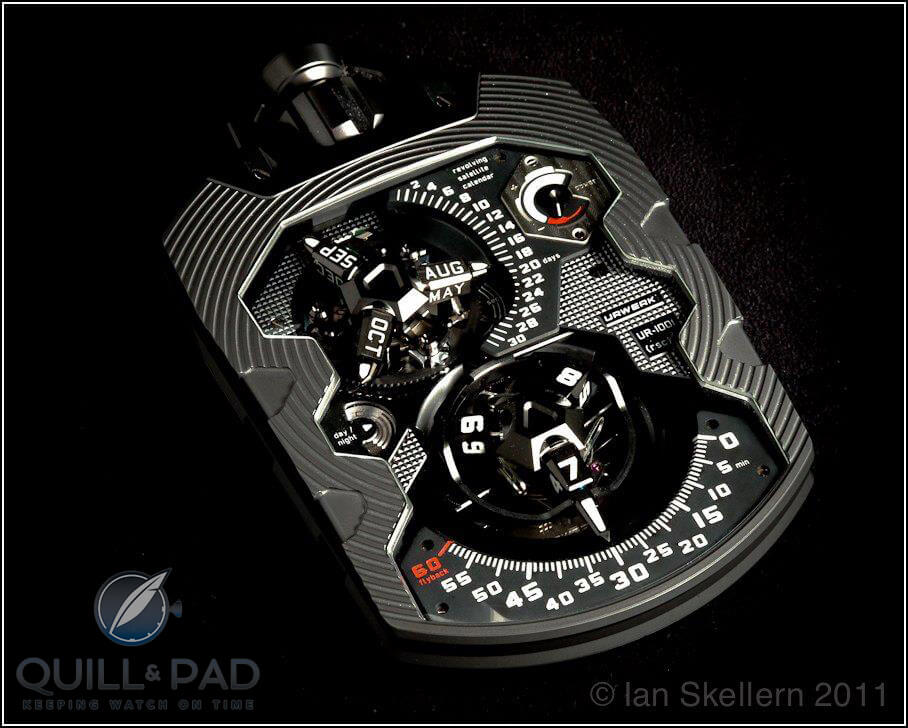
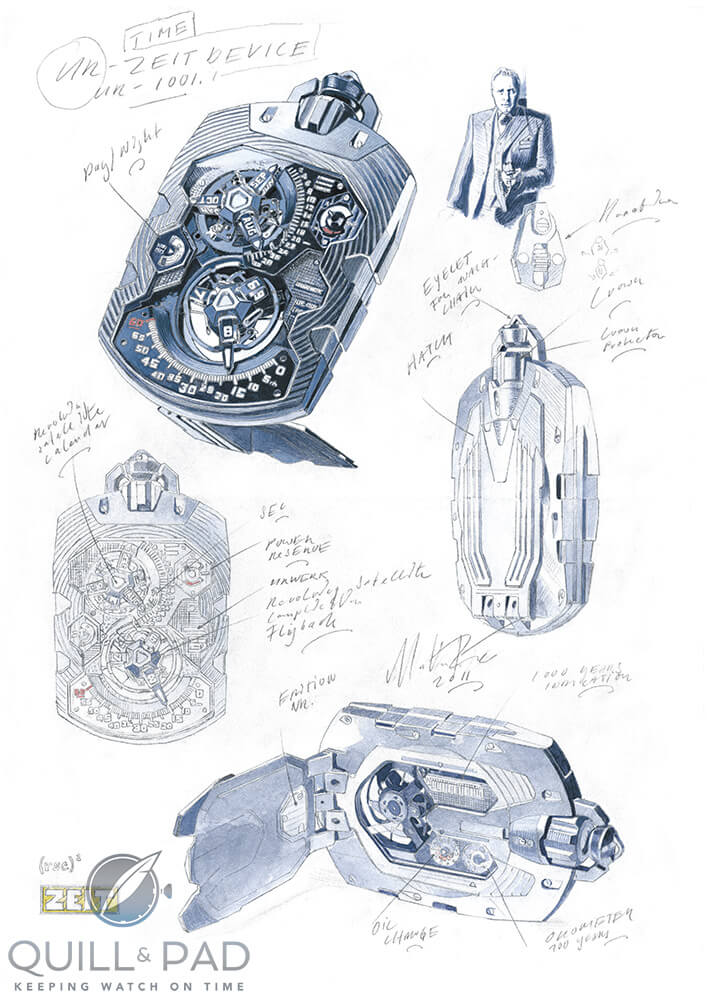
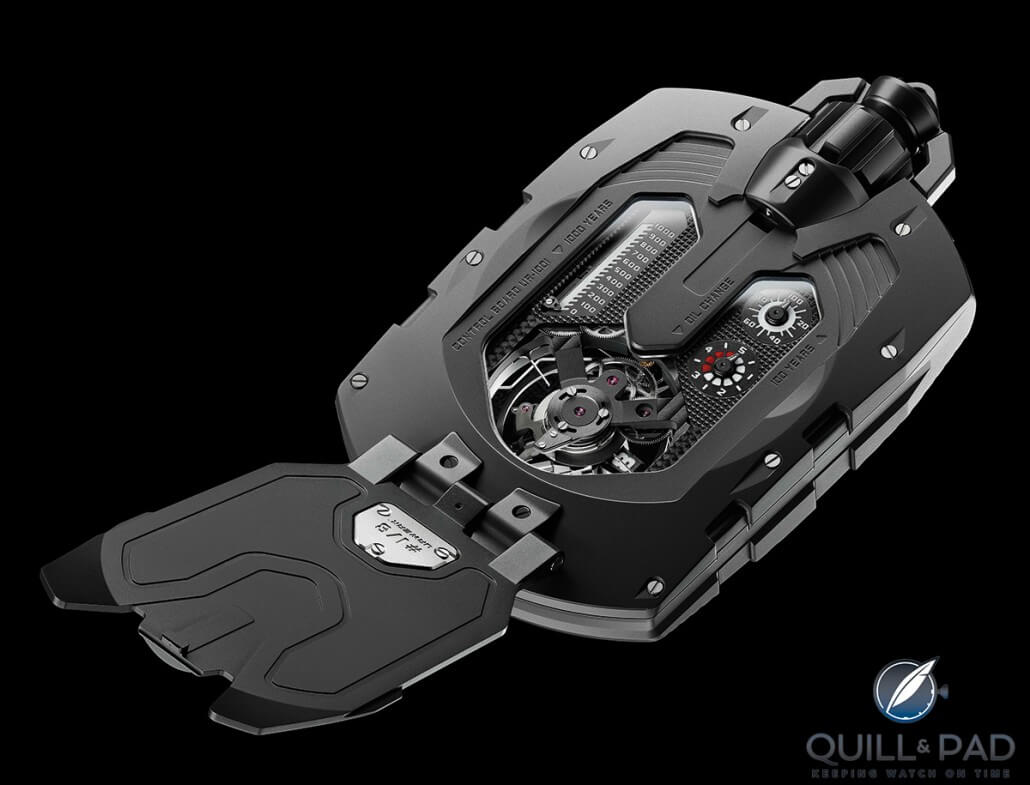
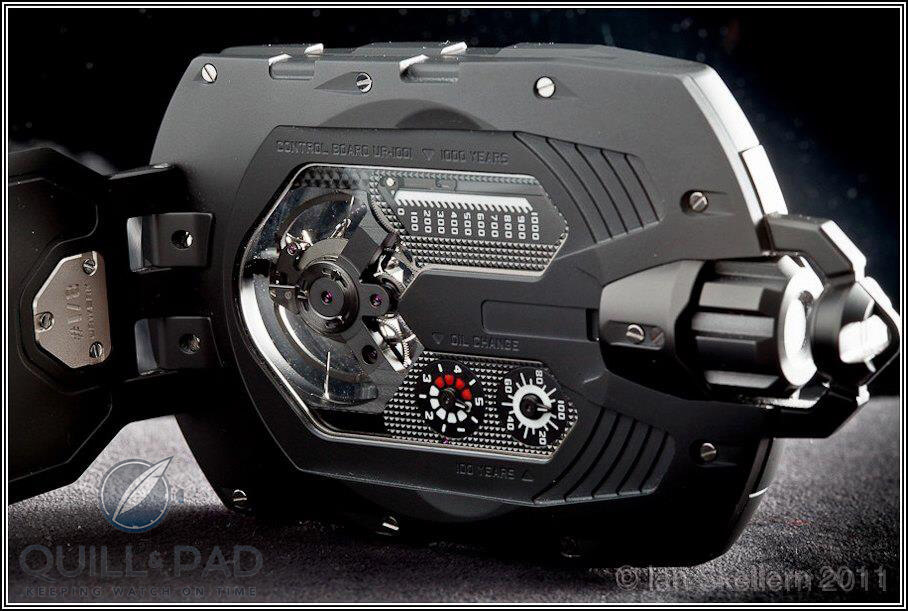
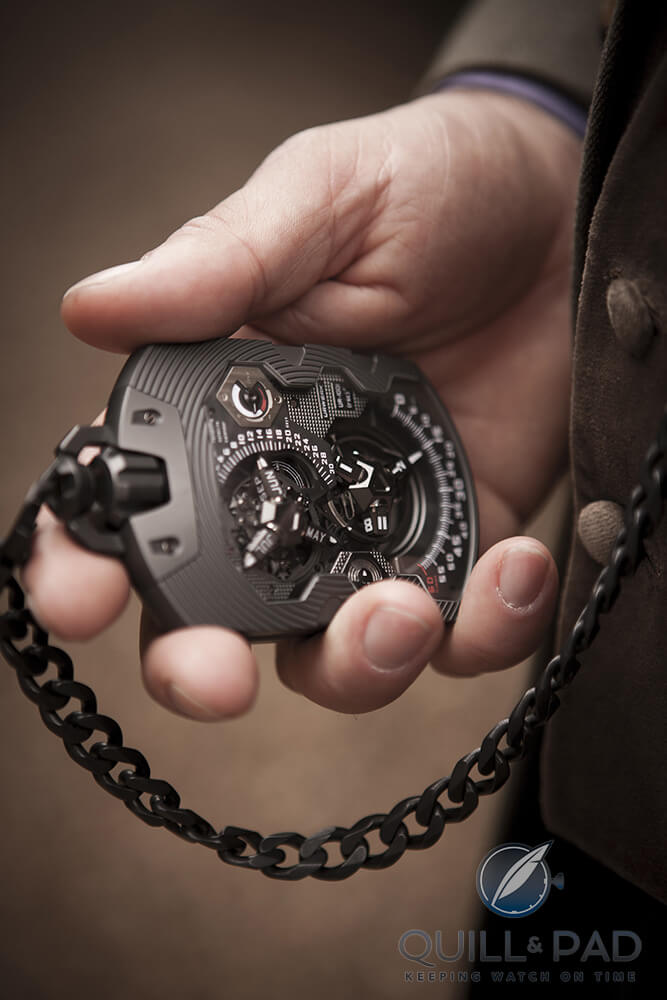
It’s a cool little vid, but would make more sense if the dude wasn’t wearing another (Urwerk) wristwatch, IMHO…
But maybe the next installment will shed light on the ‘why’. 🙂
Blown away!
I love the look…thats all i have to say.
It’s just cool…..